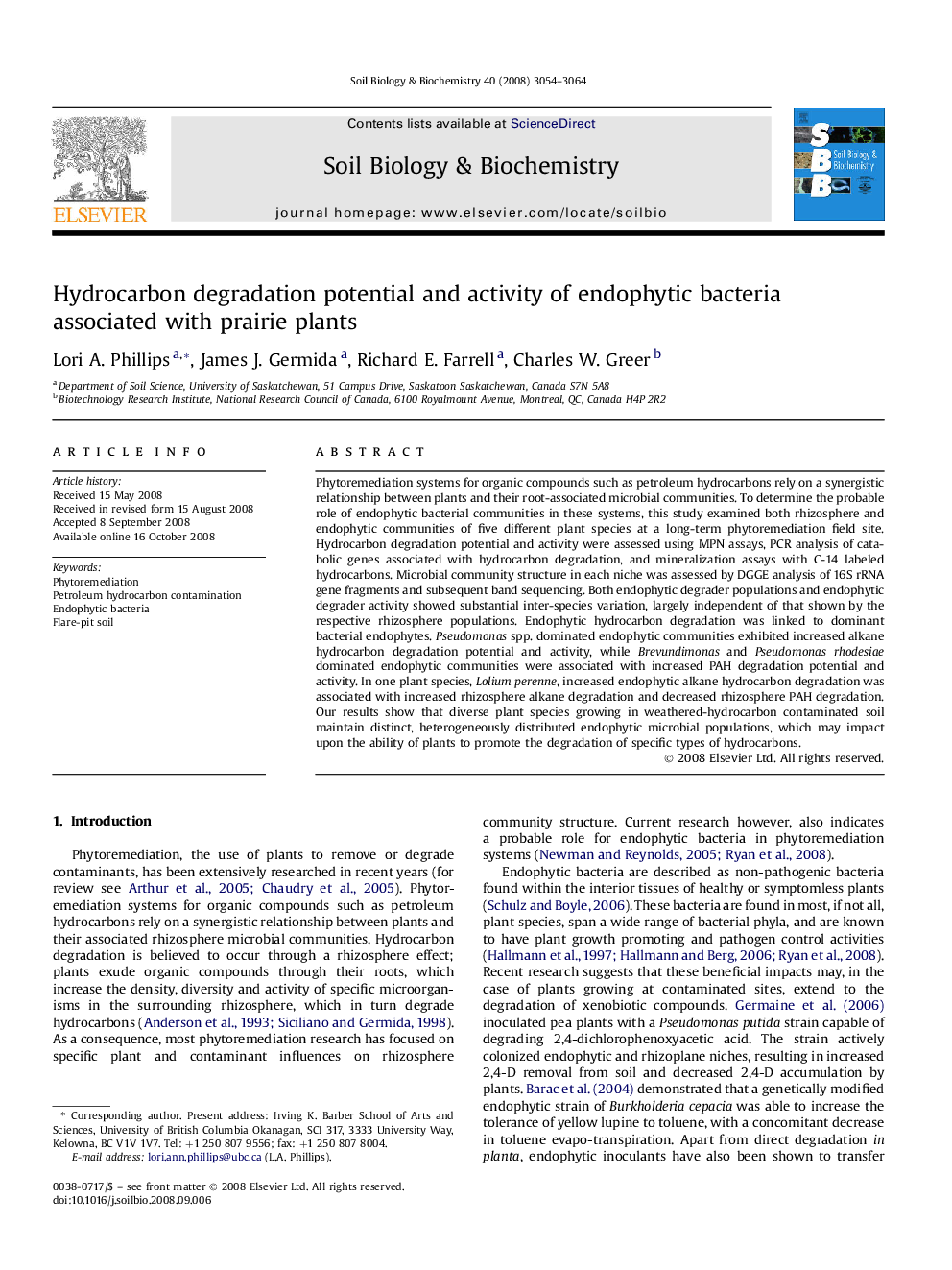| Article ID | Journal | Published Year | Pages | File Type |
|---|---|---|---|---|
| 2026305 | Soil Biology and Biochemistry | 2008 | 11 Pages |
Phytoremediation systems for organic compounds such as petroleum hydrocarbons rely on a synergistic relationship between plants and their root-associated microbial communities. To determine the probable role of endophytic bacterial communities in these systems, this study examined both rhizosphere and endophytic communities of five different plant species at a long-term phytoremediation field site. Hydrocarbon degradation potential and activity were assessed using MPN assays, PCR analysis of catabolic genes associated with hydrocarbon degradation, and mineralization assays with C-14 labeled hydrocarbons. Microbial community structure in each niche was assessed by DGGE analysis of 16S rRNA gene fragments and subsequent band sequencing. Both endophytic degrader populations and endophytic degrader activity showed substantial inter-species variation, largely independent of that shown by the respective rhizosphere populations. Endophytic hydrocarbon degradation was linked to dominant bacterial endophytes. Pseudomonas spp. dominated endophytic communities exhibited increased alkane hydrocarbon degradation potential and activity, while Brevundimonas and Pseudomonas rhodesiae dominated endophytic communities were associated with increased PAH degradation potential and activity. In one plant species, Lolium perenne, increased endophytic alkane hydrocarbon degradation was associated with increased rhizosphere alkane degradation and decreased rhizosphere PAH degradation. Our results show that diverse plant species growing in weathered-hydrocarbon contaminated soil maintain distinct, heterogeneously distributed endophytic microbial populations, which may impact upon the ability of plants to promote the degradation of specific types of hydrocarbons.
